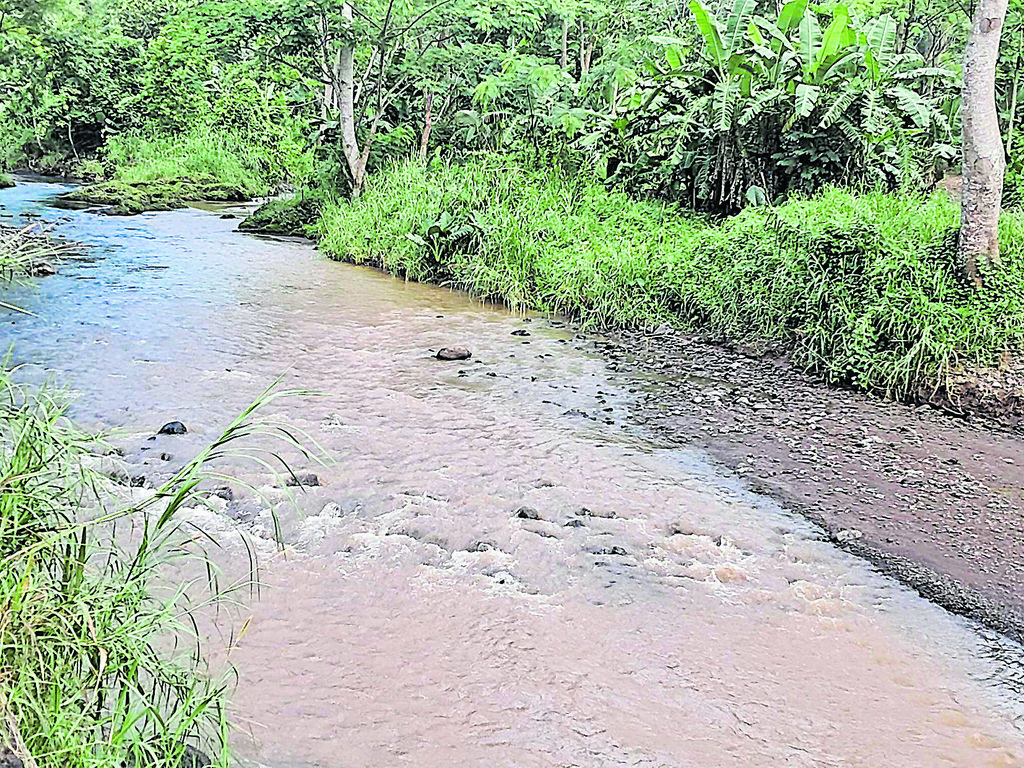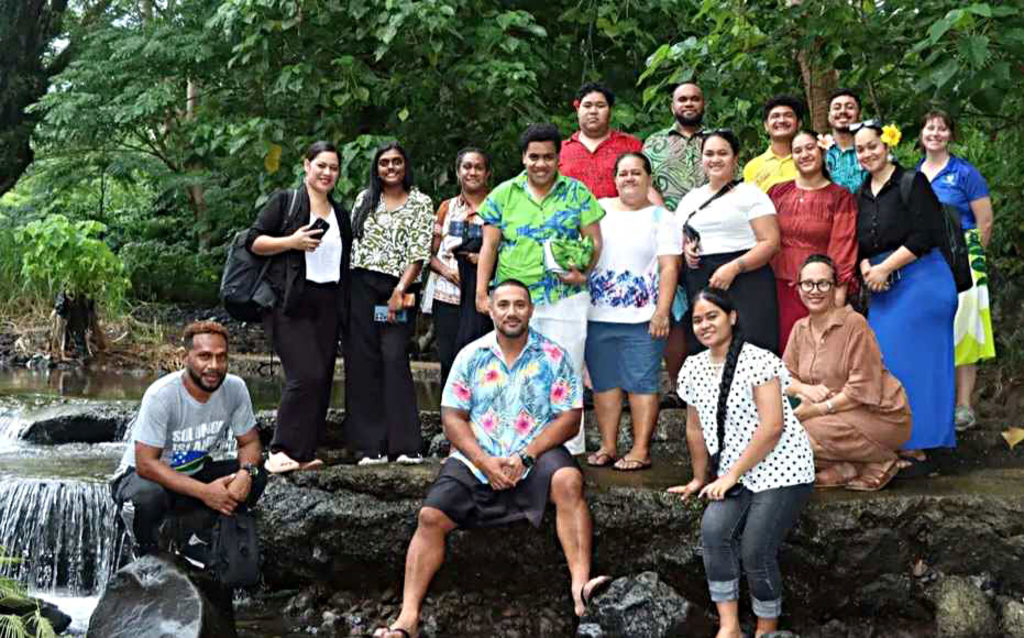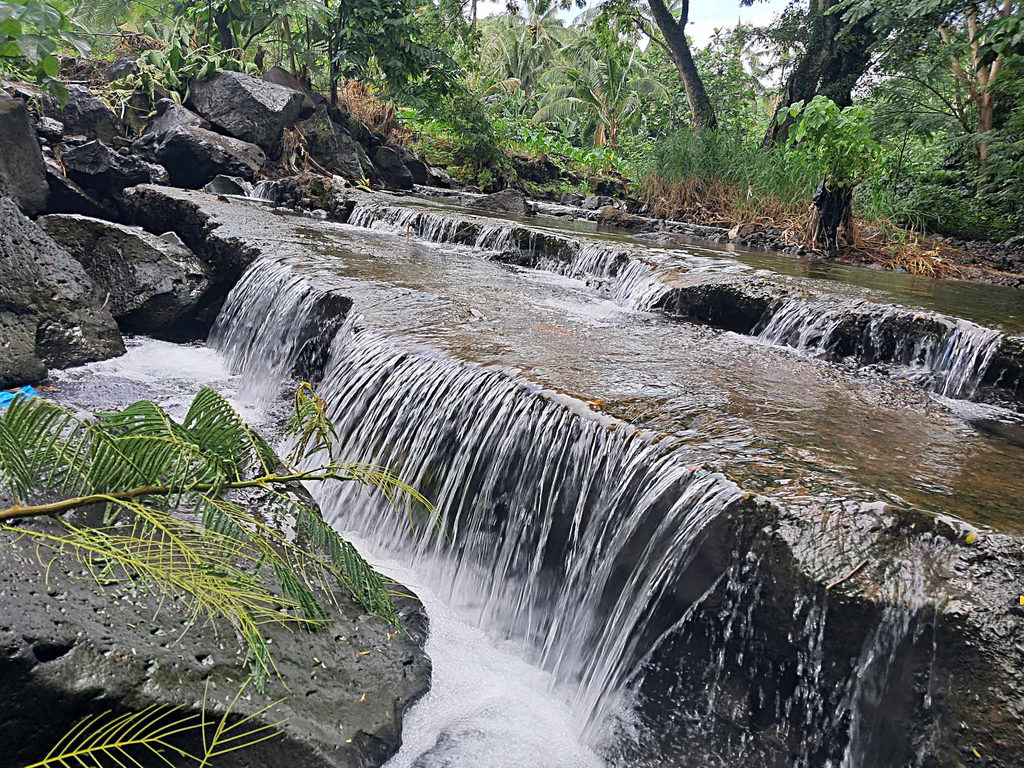AFTER more than a decade, people living along the Vaisigano River catchment in Samoa are still facing the brunt of climate change impacts.
The 31 villages located within the Vaisigano River catchment and near the Vaisigano River were badly affected by flash flooding during Tropical Cyclone Evan in 2012.
As a Small Island Developing State (SIDS) located in the Pacific, Samoa has experienced substantial effects from increasingly intense tropical storms.
Because of the country’s topography, these extreme occurrences have led to considerable river discharge, causing flooding of low-lying regions.
This has resulted in climate change-induced loss and damage concerns for the residents of Vaisigano, who still grapple with the traumas to this day.
Pacific journalists who were part of an inaugural Regional Media Training on Loss and Damage Reporting took a site visit recently to see firsthand the experiences these villagers face during rainy weather.
A resident, Asuelu Saifoloi, highlighted that flooding in the area had been consistent compared with previous years.
“We have to experience flooding almost twice a month,” Mr Saifoloi said.
“The weather pattern in Samoa, when it comes to June, it is dry season, unfortunately that has not been the pattern here.
“Every time there is rain on the mountain, there will be flooding.
“The river will burst its banks, and our children will not be able to go to school and even I cannot go to work.”
He said most people residing near the Vaisigano River catchment had been traumatised whenever there was a heavy rainfall.
“When you are about to take your children to school, the sense of fear is what if after school the river will burst, and there is no place for us to shelter.
“So, we have to stay home, and our children will not go to school.
“Even now there are a lot of unused pieces of land because we know that the land is not safe for regrowing and replanting.”
Despite the hardships, many of these families are choosing to live in customary land that was inherited from their ancestors.
“This is where we were brought to live on.
“And we have fought for our inheritance with the government to rebuild a sea wall.
“So that is a promise, we are still waiting when it will be completed.”
Mr Saifoloi said during Mother’s Day this year, Samoa had experienced a lot of rainfall.
“It was different from all other Mother’s Day. We had to cross the river from Monday to Sunday of Mother’s Day, and thankfully some of us have cars that are high enough and can access the river but low cars it cannot cross the river.
“Some of our family members that do not have cars have to cross the river barefoot. And that is what we experience every day, so we must make sure that we buy enough food to be stored or to be kept especially during rainy days.
“We don’t really get the forecast on time and no one can predict when the river will burst its banks.
“Because when the river bursts and we are not in our houses, we spend the night in our cars, parked on the back of the rivers, and have to stay there for five hours till the river dries out and we are able to cross.”
He said many of them had lost hope in growing root crops and replanting their vegetable garden because of the flooding problem.
“We rely solely on the land; we grow root crops and there was a cocoa plantation.
“My cousin owned a huge cocoa plantation and was relying on it for extra income.
“After Cyclone Evan in 2012, none of us focused on growing the land because we know the land is not secured.
“So, some of us have not planted any root crop for income purposes and to rely on for everyday consumption.
“Because from 2012 up until now, flooding has been consistent.”
Mr Saifoloi said a Green Climate Fund was dispersed to villages that were affected.
“The conditions that were in the grant was for us to do plantation farming, grow a vegetable garden and do a business.
“But we can’t do that because the land is not really secure for a business, and it is impossible for us to grow vegetables because when the river bursts, it will wash everything away and that is what is happening now.
“So, we do not want to experience that pain anymore and that is the fear we have if we go back to replanting and replenish the root crops like all the things we have been doing might go to waste.
“The sources of food for us are being damaged because the whole land is covered with river sand, and not exactly soil.”
Adaptation measures
Mr Saifoloi said they had taken proactive steps in rebuilding their houses.
“We have to lift the foundation and make sure that we don’t just use rocks, but it has to be cement foundation, and the building structure has to be strong to withstand the current flowing from the river.
“But for us to construct a sea wall, it would cost around $10million and we do not have that amount of money in our bank accounts.”
Meanwhile, another resident Sagauga Leilani Galuvao reiterated that the Samoan Government through the Green Climate Fund had been trying to address this long-standing problem for years.
“Government has been trying to address the issue of flooding,” she said.
“And this Vaisigano catchment is one of the biggest catchments in Upolu, and it ends at the CBD (central business district) so how we manage this is affecting a lot more economic sector and a high concentration of people.”
Green Climate Fund flood
management project
An Integrated Flood Management to Enhance Climate Resilience of the Vaisigano River Catchment in Samoa project was developed by the Samoan Government in partnership with the UN Development Programme in 2016.
It aims to protect people and infrastructure including schools, hospitals, government buildings, businesses, and homes from recurrent flooding of the Vaisigano river catchment, particularly associated with severe tropical storms.
A report by the Samoa Observer on July 30, 2020, stated that the Vaisigano Catchment Project was the Government’s biggest project as it cost a total of $US65.7million ($F147m) with $US57.7 million ($F129m) from the GCF and $US8million ($F18m) from the Government of Samoa.
The Vaisigano River catchment in Samoa. Picture: ELENA VUCUKULA

Pacific journalists and staff members of the Secretariat of the Pacific Regional Environment Programme (SPREP) during a site visit of the Vaisigano River catchment in Samoa. Picture: SUPPLIED



